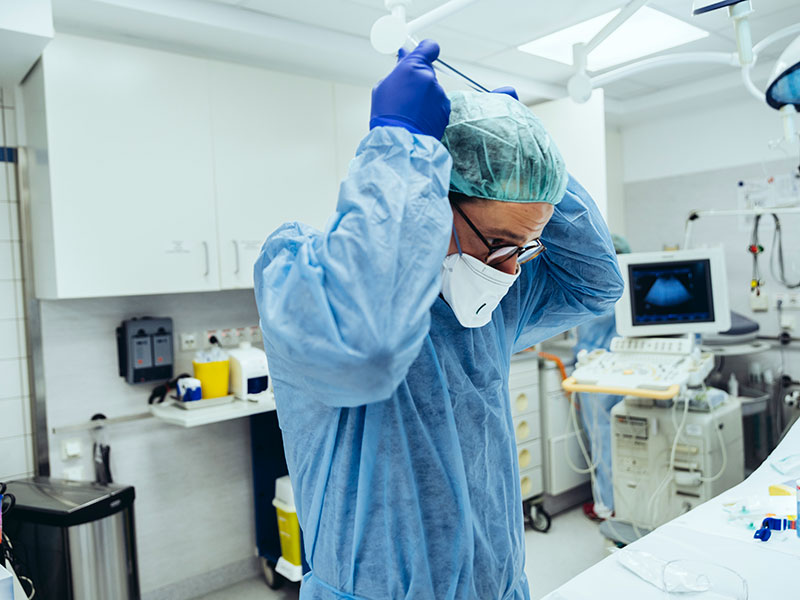It’s recommended that we all wear face masks around other people in public spaces. But what about gloves? Would they help protect us from the coronavirus, too?
The Centers for Disease Control and Prevention has not recommended disposable gloves for anyone except health care workers and people who are caring for COVID-19 patients at home.
And Sanford Health infectious disease specialist Noe Mateo, M.D., discourages the use of gloves for the general public for several reasons.
“The way I think about gloves is that they’re essentially like tools,” Dr. Mateo said. “In other words, people think they can be handy with power saws and hammers and wrenches, but you have to have had some training to use those tools correctly.”
People whose work requires the need for a barrier of protection against dirt, chemicals or biological agents have been trained to use gloves. These occupations can range from surgeons and dentists to food service workers and furniture finishers.
But if people concerned about the virus don’t use or remove gloves properly, they’re not protecting themselves. In fact, they could inadvertently cause contamination.
“It’s not going to necessarily prevent people from touching their faces, and if you happen to touch your face while still wearing a glove, then whatever was on the glove is now on your face,” Dr. Mateo said.
Touching a part of your face or your hair is often an unconscious activity, he pointed out. “So it doesn’t confer a lot of protection that way.”
Changing gloves frequently may not be practical, either — and if they’re medical gloves, that could contribute to a shortage.
Potential for contamination
Dr. Mateo also said gloves that have contact with skin can start breaking down and lose integrity fairly quickly. So if you’re counting on the gloves you’ve worn for several hours to protect you from fluid and germs, you’re overlooking the possibility for tears, abrasions or weak spots where they can enter, he explained.
And if you don’t follow the proper technique for removing gloves, you risk contamination then, too. Dr. Mateo said you can remove the first glove by touching the outside of it with the gloved hand. For the second glove, you should insert the index finger from the ungloved hand into the inside edge of the glove and pull the glove off from the inside, so when it’s removed, it essentially will be inside out.
Rather than wearing gloves, Dr. Mateo recommends relying on a barrier that bacteria and viruses can’t get through. Bonus: It’s free and always available. It’s your own skin.
“Intact skin is actually an excellent barrier against all of those biological agents,” Dr. Mateo said.
“If what you can manage to do is actually wash your hands frequently, that’s pretty good.”
Wash your hands often with soap and water. And if the skin starts to get irritated from the frequent washing, intersperse hand-washing with the use of alcohol sanitizer, “whether it’s a gel or a foam or a spray,” Dr. Mateo recommended. Use hand lotion to help with skin irritation as well.
When you do go out shopping, Dr. Mateo recommends following social distancing guidelines, wearing a face mask and using sanitizing wipes on things like shopping cart and basket handles. He thinks sanitizing wipes would be a good idea for plane travel, too — wiping down high-touch areas such as the tray, handles, side arms, light and call buttons.
Learn more
- COVID-19 FAQs: Do we need to wear face masks?
- Hand hygiene 101: A dermatologist’s tips for protecting yourself
- COVID-19 FAQs: What is social distancing?
…
Posted In COVID-19, Frequently Asked Questions, Wellness
